Life Span Development A Topical Approach Feldman 2nd Edition Test Bank
$38.00
Name: Life Span Development A Topical Approach
Author: Feldman
Edition: 2nd
ISBN-10: 0205951031
Type: Test Bank
- Description
- Reviews (0)
Description
You will receive this product immediate after placing the order
Life Span Development A Topical Approach Feldman 2nd Edition Test Bank
Life Span Development A Topical Approach Feldman 2nd Edition Test Bank
***THIS IS NOT THE ACTUAL BOOK. YOU ARE BUYING the Test Bank in e-version of the following book***
Name: Life Span Development A Topical Approach
Author: Feldman
Edition: 2nd
ISBN-10: 0205951031
Type: Test Bank
– The test bank is what most professors use an a reference when making exams for their students, which means there’s a very high chance that you will see a very similar, if not exact the exact, question in the test!
– The file is either in .doc, .padf, excel, or zipped in the package and can easily be read on PCs and Macs.
– Delivery is INSTANT. You can download the files IMMEDIATELY once payment is done.
If you have any questions, please feel free to contact us. Our response is the fastest. All questions will always be answered in 6 hours., most of the time within 30mins
We also faced similar difficulities when we were students, and we understand how you feel.
But now, with the Life Span Development A Topical Approach Test Bank, you will be able to
* Anticipate the type of the questions that will appear in your exam.
* Reduces the hassle and stress of your student life.
* Improve your studying and also get a better grade!
* Get prepared for examination questions.
*Can save you time and help you understand the material.
This is the quality of service we are providing and we hope to be your helper.
Delivery is in the next moment. Test Bank is accurate.
Prepare to receive your Life Span Development A Topical Approach Test Bank in the next moment.
If you have any questions, or would like a receive a sample chapter before your purchase, please contact us at inquiry@testbanksafe.com
Life Span Development A Topical Approach Test Bank
Life Span Development A Topical Approach Feldman 2nd Edition Test Bank ISBN: 0205951031
Chapter 5
Cognitive Growth: Piaget and Vygotsky
5-1. Who was the Swiss developmental researcher whose theory of developmental stages highly influenced a considerable amount of work on cognitive development?
a) Skinner
b) Watson
c) Piaget
d) Erikson
Answer: c Page: 167 Level: Medium Module: Prologue LO: Introduction Type: Factual APA Outcome: 1.4
5-2. While being dressed for bed, 7-month-old Darnell picked up new baby’s comb that his mother just bought for him. Darnell had never seen this before and didn’t know how it was used, so he tried to put it in his mouth. Piaget might say that Darnell was
a) assimilating the comb into his existing schemes.
b) accommodating the comb into his existing schemes.
c) adapting the comb into his exiting schemes.
d) adapting the comb with Substage 3: Secondary circular reactions.
Answer: a Page: 169 Level: Difficult Module: 5.1 LO: 5-1 Type: Applied APA Outcome: 1.3
5-3. What is the term for an organized pattern of functioning that adapts and changes with mental development?
a) assimilation
b) scheme
c) accommodation
d) skill
Answer: b Page: 169 Level: Medium Module: 5.1 LO: 5-1 Type: Factual APA Outcome: 1.2
5-4. Piaget believed that the basic building blocks of the way children understand the world are mental structures called
a) assimilation.
b) accommodation.
c) schemes.
d) memory.
Answer: c Page: 169 Level: Medium Module: 5.1 LO: 5-1 Type: Factual APA Outcome: 1.2
5-5. Mark and Amanda just purchased some new toys for their 4-month-old son, and as soon as they put them in the baby’s crib, the baby immediately tried put the toys in his mouth, pick up and shake the toys. Piaget would say that this is an example of a
a) scheme.
b) assimilation.
c) playing.
d) accommodation.
Answer: a Page: 169 Level: Medium Module: 5.1 LO: 5-1 Type: Applied APA Outcome: 1.3
5-6. What is the term that Piaget used to explain the process in which people understand an experience in terms of their current stage of cognitive development and way of thinking?
a) scheme
b) assimilation
c) accommodation
d) operational stage
Answer: b Page: 169 Level: Medium Module: 5.1 LO: 5-1 Type: Factual APA Outcome: 1.2
5-7. Piaget thought that ________ occurs when a stimulus or event is acted upon, perceived, and understood in accordance with existing patterns of thought.
a) assimilation
b) scheme
c) accommodation
d) learning
Answer: a Page: 169 Level: Medium Module: 5.1 LO: 5-1 Type: Conceptual APA Outcome: 1.2
5-8. Four-year-old Alex and his mother visited the zoo. While they were there, Alex’s mother took him to see the squirrel exhibit. Alex saw many different types of squirrels, but when he saw a flying squirrel glide from one branch to the next he pointed and said, “A bird.” Considering Piaget’s work, Alex is demonstrating an example of
a) scheme.
b) accommodation.
c) object permanence.
d) assimilation.
Answer: d Page: 169 Level: Medium Module: 5.1 LO: 5-1 Type: Applied APA Outcome: 1.3
5-9. Piaget used the term _______ to describe changes in existing ways of thinking that occur in response to encounters with new stimuli or events.
a) accommodation
b) scheme
c) preoperational
d) assimilation
Answer: a Page: 169 Level: Medium Module: 5.1 LO: 5-1 Type: Factual APA Outcome: 1.2
5-10. Five-year-old Alex and his mother visited the zoo. While they were there, Alex’s mother took him to see the squirrel exhibit. Alex saw many different types of squirrels, but when he saw a flying squirrel glide from one branch to the next he pointed and said, “A bird with a tail.” Considering Piaget’s work, Alex is demonstrating an example of
a) scheme.
b) accommodation.
c) object permanence.
d) assimilation.
Answer: b Page: 169 Level: Medium Module: 5.1 LO: 5-1 Type: Applied APA Outcome: 1.3
5-11. Baby Alexander makes minor changes in his schemes each time his environment provides him with a new experience. This is the process of
a) accommodation.
b) simple reflexes.
c) assimilation.
d) secondary circular reactions.
Answer: a Page: 169 Level: Medium Module: 5.1 LO: 5-1 Type: Applied APA Outcome: 1.3
5-12. Piaget believed that the exact timing of a stage reflects an interaction between the infant’s ________ and __________.
a) level of physical maturation; the nature of the social environment in which the child is raised
b) level of physical maturation; the genetic predisposition of the child
c) level of cognitive development; the environment in which the child is raised
d) level of physical maturation; cognitive development of the child
Answer: a Page: 170 Level: Difficult Module: 5.1 LO: 5-1 Type: Conceptual APA Outcome: 1.2
5-13. Piaget believed that the earliest schemes are limited to ________ that we have when we are born.
a) inherited abilities
b) senses
c) neuron and synapse development
d) reflexes
Answer: d Page: 169 Level: Medium Module: 5.1 LO: 5-1 Type: Conceptual APA Outcome: 1.2
5-14. Piaget’s theory of development assumed that all children pass through a series of ____ universal stages in a fixed order from birth to adolescence. These are
a) 5; sensorimotor, preoperational, formal operational concrete operational, and maturation.
b) 4; sensorimotor, preoperational, concrete operational, and formal operational.
c) 3; preoperational, concrete operational, and formal operational.
d) 6; sensorimotor, preoperational, concrete operational, formal operational, assimilation, and accommodation.
Answer: b Pages: 169 Level: Difficult Module: 5.1 LO: 5-2 Type: Conceptual APA Outcome: 1.2
5-15. Piaget argued that infants acquire knowledge through
a) sensation.
b) perception.
c) facts communicated by others.
d) direct motor behavior.
Answer: d Pages: 169 Level: Medium Module: 5.1 LO: 5-2 Type: Conceptual APA Outcome: 1.2
5-16. What is the term for Piaget’s initial major stage of cognitive development, which can be broken down into six substages?
a) concrete operational
b) preoperational
c) sensorimotor
d) formal operational
Answer: c Pages: 169 Level: Medium Module: 5.1 LO: 5-2 Type: Factual APA Outcome: 1.2
5-17. In Piaget’s sensorimotor period, the first stage is called
a) first habits and primary circular reactions.
b) schemes.
c) assimilation.
d) simple reflexes.
Answer: d Page: 170 Level: Medium Module: 5.1 LO: 5-2 Type: Factual APA Outcome: 1.2
5-18. Beth normally breast-feeds her baby; however, during the workday Beth’s mother watches her baby, and the baby must be fed with a bottle. Beth has noticed that her baby’s approach to being bottle-fed is somewhat different than when the baby is being breast-fed. Piaget would say that this is an example of
a) scheme.
b) Substage 1: Simple reflexes of the sensorimotor stage.
c) accommodation.
d) assimilation.
Answer: b Page: 170 Level Difficult Module: 5.1 LO: 5-2 Type: Applied APA Outcome: 1.3
5-19. Piaget’s Substage 2: First habits and primary circular reactions occurs for infants in the age range of
a) 1-6 months of age.
b) 1-8 months of age.
c) 1-4 months of age.
d) 4-8 months of age.
Answer: c Page: 170 Level: Difficult Module: 5.1 LO: 5-2 Type: Factual APA Outcome: 1.2
5-20. Which of Piaget’s substages of his sensorimotor stage is the one in which infants begin to coordinate what were separate actions into single, integrated activities?
a) secondary circular reactions
b) simple reflexes
c) tertiary circular reactions
d) first habits and primary circular reactions
Answer: d Page: 170 Level: Difficult Module: 5.1 LO: 5-2 Type: Conceptual APA Outcome: 1.2
5-21. Piaget believed that __________ are schemes reflecting an infant’s repetition of interesting or enjoyable actions that focus on the infant’s own body.
a) primary circular reactions
b) circular reactions
c) secondary circular reactions
d) tertiary circular reactions
Answer: a Pages: 171 Level: Difficult Module: 5.1 LO: 5-2 Type: Factual APA Outcome: 1.2
5-22. Piaget thought that the repetition of a chance motor event that helps the baby start building cognitive schemes is a process called
a) first habits.
b) assimilation.
c) circular reaction.
d) accommodation.
Answer: c Pages: 171 Level: Difficult Module: 5.1 LO: 5-2 Type: Factual APA Outcome: 1.2
5-23. Piaget’s Substage 3: Secondary circular reactions stage occurs for infants in the age range of
a) 1-6 months of age.
b) 1-8 months of age.
c) 1-4 months of age.
d) 4-8 months of age.
Answer: d Pages: 171 Level: Difficult Module: 5.1 LO: 5-2 Type: Factual APA Outcome: 1.2
5-24. During which substage of Piaget’s sensorimotor stage does the child “begin to act upon the outside world,” in which infants seek to repeat enjoyable events in their environments if they happen to produce them through chance activities?
a) Substage 2: First habits and primary circular reactions
b) Substage 1: Simple reflexes
c) Substage 3: Secondary circular reactions
d) Substage 4: Coordination of secondary circular reactions
Be the first to review “Life Span Development A Topical Approach Feldman 2nd Edition Test Bank”
You must be logged in to post a review.



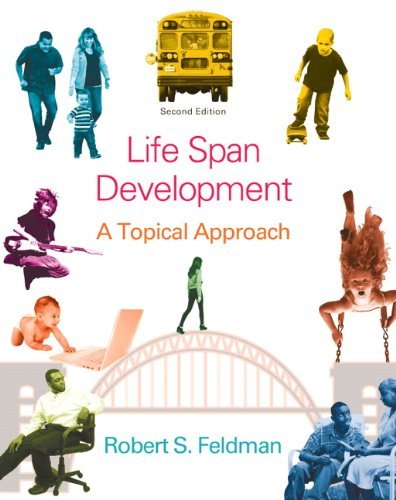

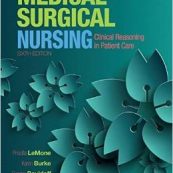
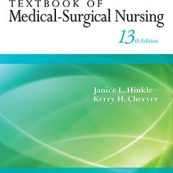
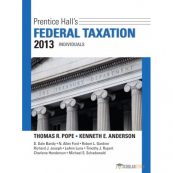
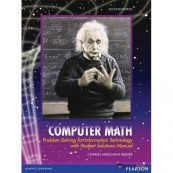
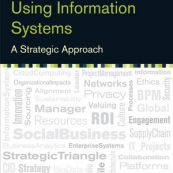

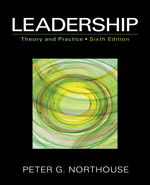
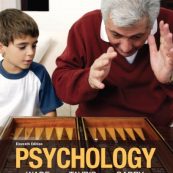

Reviews
There are no reviews yet.